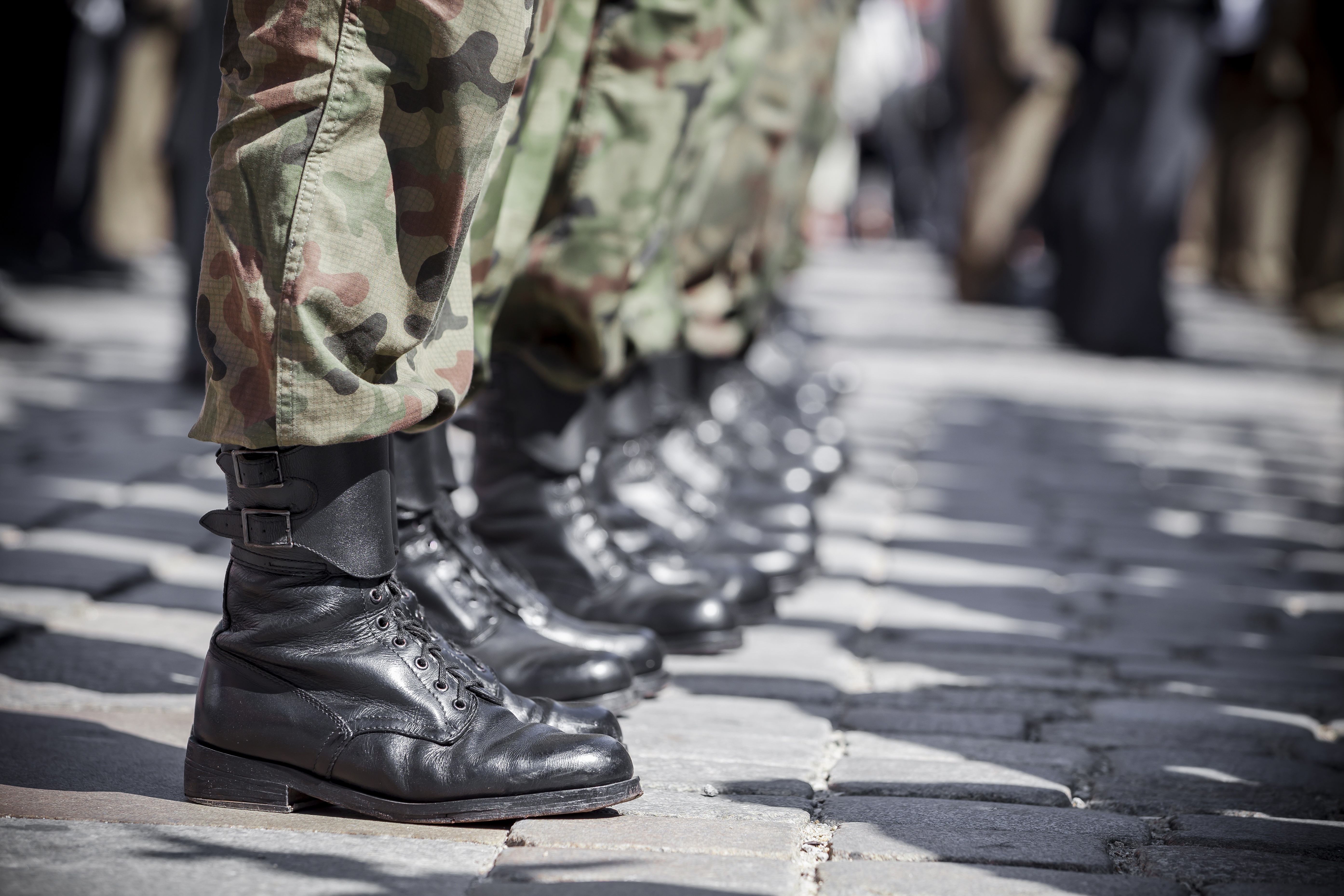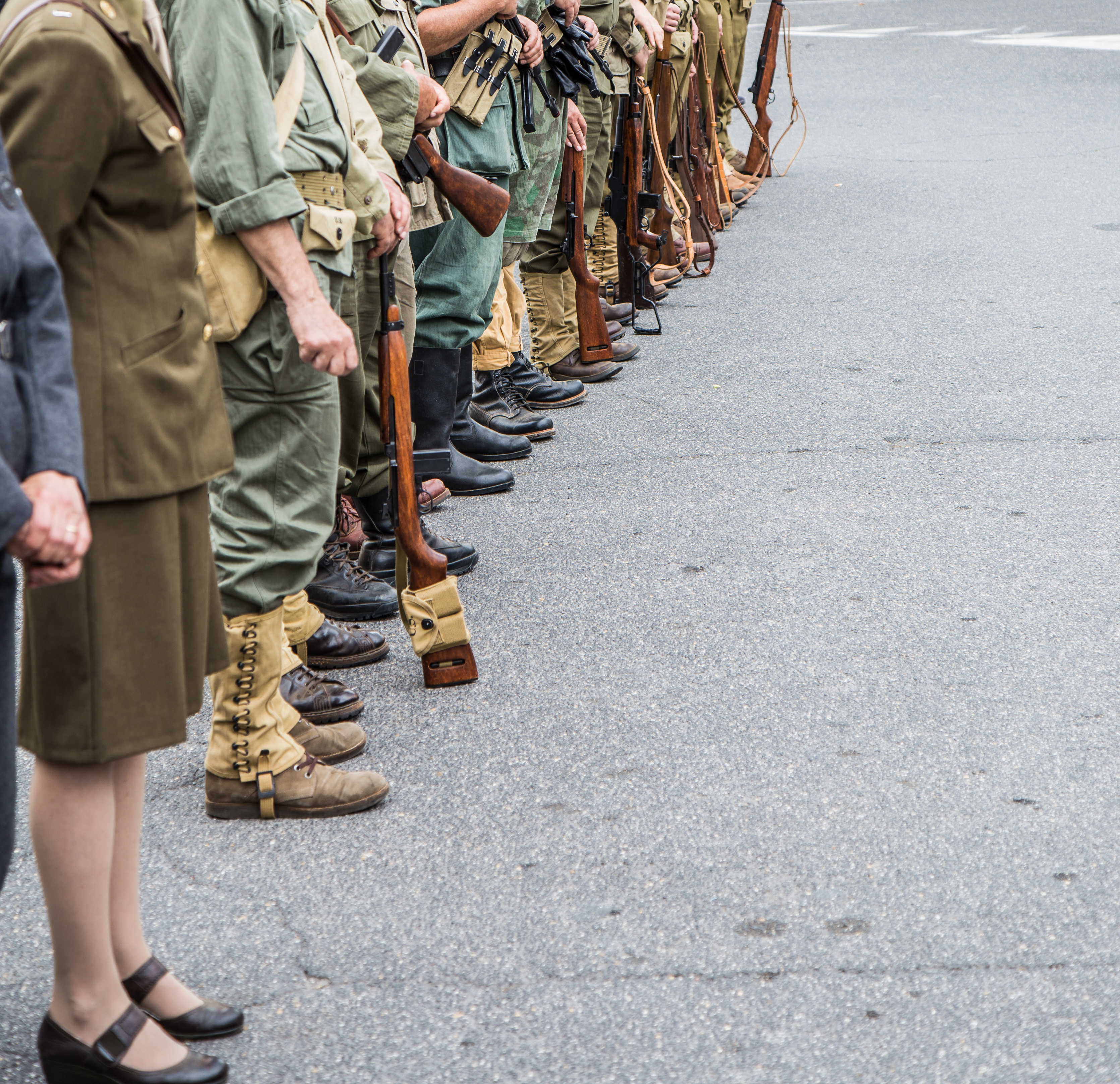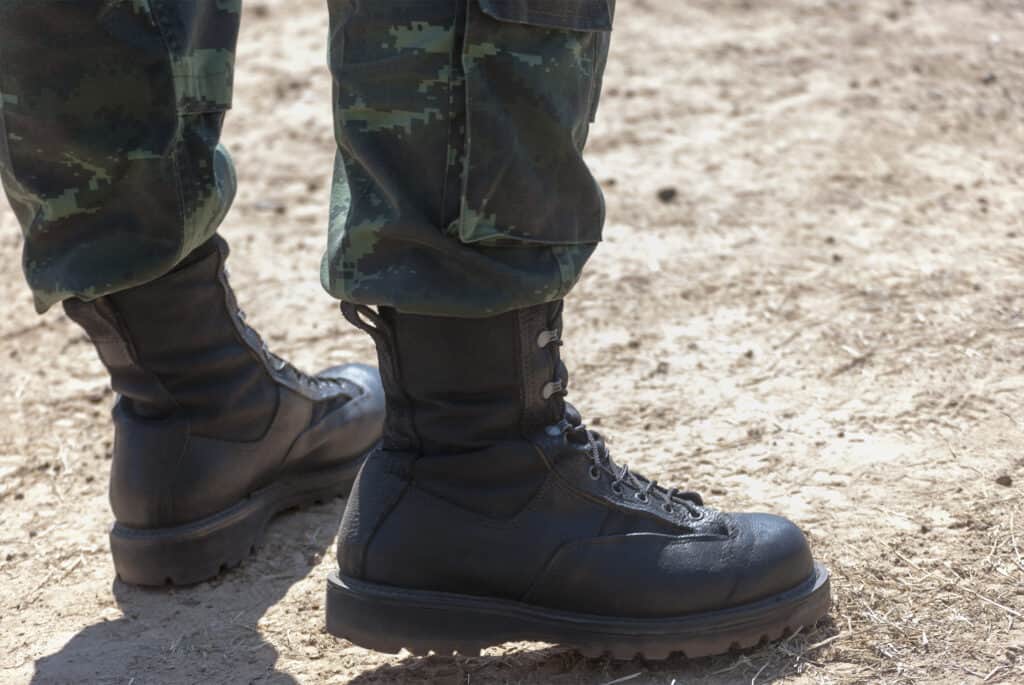
Military pants have a unique style and a particular way that they should be worn. This, however, can come with questions about just how to wear them correctly.
Military pants should fit comfortably around your waist and legs with enough room to move easily in. For those on active duty, military pants also need to be worn to regulation standards, meaning they should appear crisp and tidy.
Let’s discuss how to make military pants look the best they can on you, while still being as comfortable as possible.
Proper Sizing And Why It Matters
Like with all clothes, military pants need to fit well on your body to give you the best results. But how can you know that you have the right pair for any occasion, climate, or landscape? We’ll review some of the best aspects to consider when it comes to wearing military pants.
Material
Military pants need to be made of stretchy, flexible material to provide you with the ability to move as much as you want, no matter how difficult the terrain may be. This free movement will save you any discomfort or irritation when you spend long hours wearing the pants.
When pairs are too stiff, it won’t matter how well the military pants fit; they will be prone to tearing at the seams in the worst places, leaving you with other kinds of issues of their own.
Make sure that your military pants are also made of breathable material. Not only does this make them generally comfortable to wear, but if you’re going to wear them in hot, humid temperatures, they should be able to accommodate your figure and movement without being too restrictive, heavy, or warm. The last thing you want is to wear uncomfortable pants in already uncomfortable climates.
Likewise, should you find yourself in cold temperatures with military pants, be sure that they fit well over thermals or any layers you will wear underneath them. This may mean getting a bigger size of pants to adjust to the sizing difference and allow you to still move as you want in cooler places.
Fitting
Your military pants should not be too tight or too loose when you put them on. This may seem like a given, but how the pants both feel and look on you matter a great deal.
Pants that are too tight cause several problems. Wherever the snug areas may be, they’re prone to cause discomfort for the wearer, which is the last thing someone out in the field wants. Like with the flexibility of the pants’ material, the size also matters when it comes to preserving the integrity of the pants.
Inevitably, pants that are too tight will rip seams at the worst moments, even if they may be on the more stretchy side. Constant movement and wear make the chances of tearing even higher.
While they may not be tight, pants shouldn’t be short in length either. The trouser legs should fall below the ankle and touch the top of the boot, which will allow for proper tucking or blousing. If they don’t, then blousing will be difficult to do well.
On the other end, be sure that your military pants aren’t too big on you. Just because military pants tend to be looser on wearers doesn’t mean they should be downright baggy.
Whether you’ve lost weight or the measurements were off, don’t wait to get the size adjusted. Although tight pants may cause more issues after some wear, big pants can make blousing the bottoms more difficult, and they’ll likely look sloppy because you can’t get the crisp look the right size will give you.
Big pants may also be prone to snagging, which then causes tears of their own. And although belts help keep pants up, they still won’t be able to hide how you’ll look in a size that isn’t right for you.
When the pants aren’t bloused, a big pair that’s too long can cause the ends of the trouser legs to fall behind the heel, which leads to fraying and possible tripping.
Military pants need to fit comfortably on the hips or at least half an inch above or below them. Pants that are too high or too low, belt or no, will stand out.
Regarding appearance, too small or too big pants will look bad for those active in the military because of poor adherence to the dress code. To avoid any consequences because of failure to comply with how you should look, find a pair that:
- Fits your waistline comfortably
- Gives you room to move without any material strain
- Doesn’t excessively sag around your thighs or calves
- Stays up without a belt (but can still be worn with a belt as needed)
- Falls below the ankles
- Looks clean-cut when properly bloused
Tidiness
The military has a high standard of uniform appearance. Just like how you want your pants to fit properly in size, you also want to make sure they look like they fit you. A disheveled appearance can lead to all sorts of reprimands.
Although tactical pants may not need as much upkeep, military uniform pants should be ironed or pressed to look sharp and meet requirements. Check out this video on how to properly iron your military uniform pants.
Once you put a pair on, ironed or not, on, they should still fit you well and come to just above the top of your foot. Pants that fit right, like said before, won’t be too short and show ankle when you stand or sit or too long and bunch up around the shoes.
Of course, you may blouse your pants anyway, so the length doesn’t have to be exact–just the overall size regarding how they fit.
Blousing Pants
History Of Pants Blousing

“Jump boots,” or the style that we see in combat boots today, gained traction in WWII. U.S. Airborne forces needed boots that offered them extra ankle support if they had parachute landings, as well as reinforcement for long periods behind enemy lines. Other army-issued boots of the time only came up to the ankle for soldiers.
The Airborne paratroopers were able to tuck in, or blouse, their pants into the boots because of the good height. This also enabled them to keep their pants from billowing up if they had to parachute somewhere or faced high winds in an airplane. Along with that, bloused pants kept out debris, bugs, and other unwanted things from falling into their boots.
Soldiers in WWII fervently sought after jump boots because of their sleek look and the better protection they offered than the issued double buckle boots of the time. As with all exclusive apparel that others badly want, this caused a bit of tension among paratroopers and other soldiers when it came to who actually deserved to wear jump boots and who didn’t.
The military eventually saw the benefit in the jump boot style after WWII due to their durable make (and they were popular among soldiers, too). Soldiers saw themselves all issued a pair during the Korean War and Vietnam War.
Why Blousing Matters
The blousing requirement, of course, stayed with the issue of what we now know as the standard style of combat boots. And just like what blousing did for paratroopers in WWII, soldiers in all military branches get the same protection from:
- Bugs
- Dirt
- Snow
- Rubble
- Wind
- Cold
The way that military pants are bloused can also help or hinder how dirt and snow collect in the creases of the pants. Pants that have been bloused best are less likely to gather dust. In the case of snow, it’s less likely to also melt and make your legs colder than they already are. Pants that haven’t been bloused with attention to detail are more likely to gather debris.
Knowing how to blouse is a must when you wear military pants. While it may not be as imperative to have that tidy, clean-cut bloused look out on the field, it is important for dress uniforms. Generally speaking, the sharper the pants appear, the better it is for you.
Blousing Methods
Military personnel who blouse their pants have a couple ways of doing it.
Tuck into pants: Wearers can simply tuck the pants into their boots. While this is easy, quick, and comfortable, it can leave the pants looking disheveled. The method doesn’t offer much protection from rubble or bugs slipping in either.
The pants are also prone to slipping out of the shoes because they’re not secured by anything. Alternatively, you can tuck your pants into a good pair of socks instead of the shoe itself, which increases the chances of keeping cold air out and helping the pant’s legs stick.
Use boot blousers: easily found online, boot blousers come in the shape of a sturdy elastic band that’s typically strapped and tightened with Velcro. They keep cold temperatures and wind from sneaking into your pants, as well as unwanted dirt and crawlers.
If you want a straightforward way of getting your pants to look good and appropriately sized on you, these boot bands are a good and well-liked option.
One downside to the boot blousers is that they can become uncomfortable to wear after a while. So, if you plan to wear them for long periods of time, expect that they may chafe or cut off circulation.
Another downside is that boot blousers have a low chance of getting that crisp, dress uniform look you may want.
You can find boot blousers here.
Wear blousing straps inside pants: Although it may be more time-consuming, the method of putting blousing straps inside military pants is sure to get the best look for uniforms, and it may hide some extra space if your military pants are a little too big.
The straps also offer the same protections as boot blousers. Unfortunately, like boot blousers, the straps can affect your circulation if they’re worn for a long time. And, of course, you can also wear boot blousers inside your pants the same way you would with blousing straps.
Find blousing straps here.
How To Blouse Pants

Because tucking military pants into boots doesn’t need much instruction, we’ll focus on how to blouse pants using either boot blousers or blousing straps.
Boot Blousing Outside Of Pants
A tried-and-true blousing method for military personnel, blousing pants with bands outside of the pants is great for quick dressing. As mentioned earlier, blousing outside of your military pants won’t get a crisp appearance, but it is still very functional.
For this method, you will:
- Have socks and boots on with your military pants
- Secure boot blousers or blousing straps right on top of boots
- Make sure blousers/straps aren’t too tight against the leg
- Roll bottom of pants leg inward
- Tuck pants leg into blousers/straps
- Continue to adjust until pants are at their desired length
- Tug down if pants are too high or too tightly tucked
It helps to measure how much you should tuck your pants legs into the blousers/straps if you stand. Sitting and blousing may throw off the length of your tucked-in pants, which means you’ll likely have to do the whole process over again to get the results you want.
Boot Blousing Inside Of Pants
When you want your military pants to look extra nice, take the time to blouse inside of pants. This method achieves a smooth and tidy look while offering you the same protective bonuses.
For this method, you will:
- Have socks and boots on with your military pants
- Pull pants down and bring the bottom of pants legs inward
- Place boot blousers or blousing straps on top of inside-out pants in the desired area and secure
- Bring the tucked-in pants up more until they fit straight and evenly against legs
- Leave room for balloon look if desired
- Pull pants back up and evaluate
Like with the other method, blousing pants when the blousers/straps are on the inside look best when you stand as you do it. Because this method is longer, be sure to do every step properly to avoid redoing.